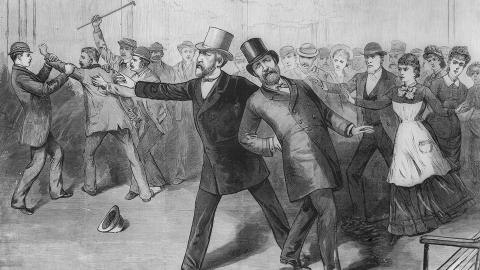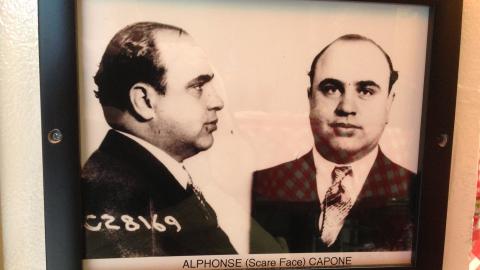Gold is discovered in the Yukon
While salmon fishing near the Klondike River in Canada's Yukon Territory on this day in 1896, George Carmack reportedly spotted nuggets of gold in a creek bed. His lucky discovery sparked the last great gold rush in the American West. Hoping to cash in on reported gold strikes in Alaska, Carmack had travelled there from California in 1881. After running into a dead end, he headed north into the isolated Yukon Territory, just across the Canadian border.
In 1896, another prospector, Robert Henderson, told Carmack of finding gold in a tributary of the Klondike River. Carmack headed to the region with two Native American companions, known as Skookum Jim and Tagish Charlie. On 16 August, while camping near Rabbit Creek, Carmack reportedly spotted a nugget of gold jutting out from the creek bank. His two companions later agreed that Skookum Jim – Carmack's brother-in-law – actually made the discovery. Regardless of who spotted the gold first, the three men soon found that the rock near the creek bed was thick with gold deposits. They staked their claim the following day. News of the gold strike spread fast across Canada and the United States, and over the next two years, as many as 50,000 would-be miners arrived in the region.
Rabbit Creek was renamed Bonanza, and even more gold was discovered in another Klondike tributary, dubbed Eldorado. "Klondike Fever" reached its height in the United States in mid-July 1897 when two steamships arrived from the Yukon in San Francisco and Seattle, bringing a total of more than two tonnes of gold. Thousands of eager young men bought elaborate "Yukon outfits" (kits assembled by clever marketers containing food, clothing, tools and other necessary equipment) and set out on their way north. Few of these would find what they were looking for, as most of the land in the region had already been claimed. One of the unsuccessful gold-seekers was 21-year-old Jack London (1876-1916), whose short stories based on his Klondike experience were compiled into his first book, ‘The Son of the Wolf’ (1900).
He would later go on to write many stories of the same nature, including the well-loved ‘The Call of the Wild’ (1903) and ‘White Fang’ (1906). For his part, Carmack became rich off his discovery, leaving the Yukon with $1 million worth of gold. Many individual gold miners in the Klondike eventually sold their stakes to mining companies, who had the resources and machinery to access more gold. Large-scale gold mining in the Yukon Territory did not end until 1966, and by that time the region had yielded some $250 million in gold. Today, some 200 small gold mines still operate in the region.








